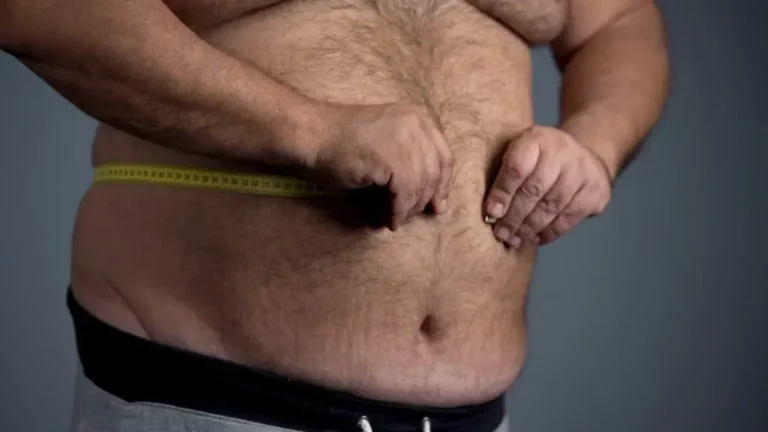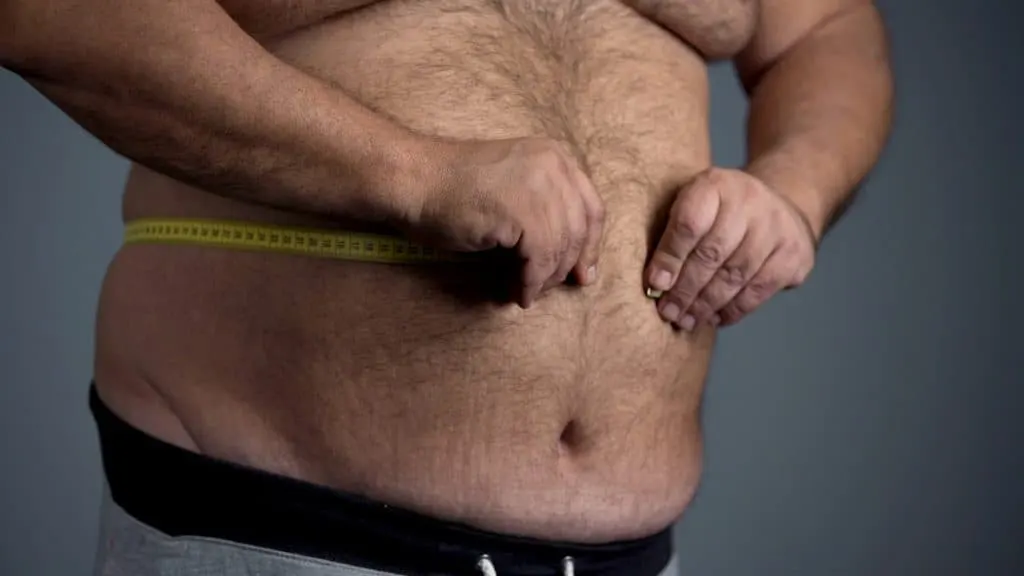
Introducing the 53 inch waist, a topic that brings attention to waist measurements that have reached significant proportions. With a size that exceeds the average, a 53-inch waist denotes a substantial girth around the midsection. Such dimensions signify a greater likelihood of health-related concerns, as excess abdominal fat is linked to various ailments.
Transitioning now, it is important to acknowledge the potential risks associated with a waistline of this magnitude. By maintaining a readability level akin to second-grade comprehension, we strive to ensure that information about this topic is accessible to all.

Let us explore the impact of a 53 inch waist on an individual’s well-being, considering factors such as the increased risk of heart disease, diabetes, and other obesity-related conditions. By employing straightforward language and concise sentences, we aim to convey the significance of waist size and its implications for one’s overall health.
Related Waist Measurement Guides:
- 50 in waist
- 51 in waist
- 52 in waist
- 54 in waist
- 55 in waist
- 56 in waist
- 57 in waist
- 58 in waist
- 59 in waist
Contents
How large is a 53 inch waist?
A 53-inch waist is quite substantial in size. Let’s delve into the details to understand its magnitude more clearly. Transitioning now, we can visualize this measurement by considering its comparison to other familiar objects. For instance, a 53-inch waist is equivalent to more than four feet in circumference. It surpasses the average waist size by a significant margin, indicating a notable increase in girth around the midsection. In simpler terms, a 53-inch waist is considerably larger than what is commonly observed.
To put it into perspective, imagine a tape measure stretched around your waist, extending beyond four feet in length. That’s how extensive a 53-inch waist would be. This expansive measurement highlights the presence of excess abdominal fat, which can have implications for one’s overall health.
It is important to note that carrying excess weight around the midsection is linked to various health risks. Individuals with a 53-inch waist may be more prone to developing conditions such as heart disease, diabetes, and other obesity-related ailments. Therefore, it becomes crucial to pay attention to one’s waist size and take steps toward maintaining a healthy lifestyle.

By emphasizing a second-grade level of readability, we strive to ensure that this information is easily comprehensible to all. Understanding the size and significance of a 53-inch waist can serve as a starting point for individuals to make informed choices about their health and well-being.
Should you be concerned about having a 53 inch waist?
Having a 53-inch waist is a cause for concern. Your waist size plays a significant role in your overall health and well-being. Firstly, such a large waist circumference indicates that you may be carrying excess weight, particularly in the abdominal region. This excess weight can lead to various health issues, including heart disease, high blood pressure, type 2 diabetes, and certain types of cancer.
Furthermore, larger waist size is often associated with a higher body mass index (BMI), which is an indicator of obesity. Obesity is a serious condition that can negatively impact your quality of life and increase your risk of developing chronic diseases. Additionally, a large waist circumference is commonly linked to visceral fat, which surrounds your internal organs. This type of fat is more harmful than subcutaneous fat, as it releases inflammatory substances that can contribute to health problems.
Moreover, having a 53-inch waist may also affect your mobility and physical abilities, making it difficult to engage in regular physical activity and leading to a sedentary lifestyle. This sedentary lifestyle can further exacerbate your health concerns.

Finally, consulting with a healthcare professional who can provide personalized advice and guidance regarding your waist size is essential. They can help you develop a plan to reduce your waist circumference through a combination of healthy eating, regular exercise, and lifestyle changes. By taking proactive steps to address your waist size, you can improve your overall health and well-being.
How can you lose fat from your 53 in waist?
If you want to lose fat from your 53-inch waist, there are several things you can do to achieve your goal. Firstly, it’s important to focus on creating a calorie deficit. This means consuming fewer calories than you burn each day. Transition: Therefore, you should pay attention to your diet.
Start by incorporating more fruits, vegetables, and lean proteins into your meals. Additionally, avoid sugary drinks and processed foods, as they can contribute to weight gain. Instead, choose water or unsweetened beverages as your main hydration source. Transition: Furthermore, you can also try exercising regularly.
Engaging in physical activity is crucial for burning calories and reducing fat. Aim for at least 150 minutes of moderate-intensity aerobic exercise each week, such as brisk walking or cycling. Additionally, include strength training exercises to build muscle, which can help boost your metabolism. Transition: In addition to diet and exercise, there are other lifestyle changes you can make.
Getting enough sleep is important, as lack of sleep can affect your metabolism and increase cravings for unhealthy foods. Aim for 7-9 hours of quality sleep each night. Moreover, managing stress through techniques like meditation or deep breathing exercises can prevent emotional eating and support weight loss. Transition: Remember, losing fat from your waist takes time and consistency.

Don’t expect overnight results, and be patient with yourself. Stay motivated and track your progress to stay on the right path. Transition: In conclusion, losing fat from your 53-inch waist involves creating a calorie deficit, incorporating healthy eating habits, exercising regularly, prioritizing sleep, and managing stress.
What can you expect on your stomach-slimming journey?
When embarking on your stomach-slimming journey, you can anticipate a number of things. First and foremost, incorporating a balanced and nutritious diet is crucial. Make sure to consume plenty of fruits, vegetables, lean proteins, and whole grains. Additionally, drinking sufficient water is important to stay hydrated and aid in digestion.
Regular physical exercise is also vital in achieving your goals. Engaging in activities like jogging, cycling, or swimming will help burn calories and strengthen your core muscles. Remember to start slowly and gradually increase the intensity to avoid injury.
Transitioning to a healthier lifestyle requires commitment and patience. It is essential to set realistic goals and track your progress. Celebrate even the smallest achievements to stay motivated.
Lastly, maintaining a positive mindset is key. Avoid comparing yourself to others and focus on your own progress. Surround yourself with a supportive network of friends and family who encourage and uplift you.

To sum up, your stomach-slimming journey demands a balanced diet, regular exercise, realistic goals, and a positive mindset. With dedication and perseverance, you can achieve a slimmer stomach and improved overall health.
Conclusion
In conclusion, a 53-inch waist is a significant measurement that indicates excess weight and potential health risks. Understanding the size and implications of a waistline of this magnitude is crucial for individuals to make informed choices about their well-being. A large waist circumference is associated with a higher risk of heart disease, diabetes, and other obesity-related conditions. It is essential to be concerned about having a 53-inch waist and take proactive steps to address it.
To lose fat from a 53-inch waist, a combination of strategies is recommended. Creating a calorie deficit through a balanced diet, incorporating regular exercise, prioritizing sleep, and managing stress are key elements of a successful fat-loss journey. Patience, consistency, and tracking progress are vital, as losing fat takes time.
Embarking on a stomach-slimming journey involves adopting a nutritious diet, engaging in regular exercise, setting realistic goals, and maintaining a positive mindset. By following these steps and seeking support from loved ones, individuals can achieve a slimmer stomach and improve their overall health.
References
- Bray, G. A. (2004). Medical consequences of obesity. Journal of Clinical Endocrinology & Metabolism, 89(6), 2583-2589. doi: 10.1210/jc.2004-0535
- Centers for Disease Control and Prevention. (2022). About Adult BMI. Retrieved from https://www.cdc.gov/healthyweight/assessing/bmi/adult_bmi/index.html
- Harvard Health Publishing. (2018). Abdominal fat and what to do about it. Retrieved from https://www.health.harvard.edu/staying-healthy/abdominal-fat-and-what-to-do-about-it
- National Heart, Lung, and Blood Institute. (2022). Assessing Your Weight and Health Risk. Retrieved from https://www.nhlbi.nih.gov/health/educational/lose_wt/risk.htm